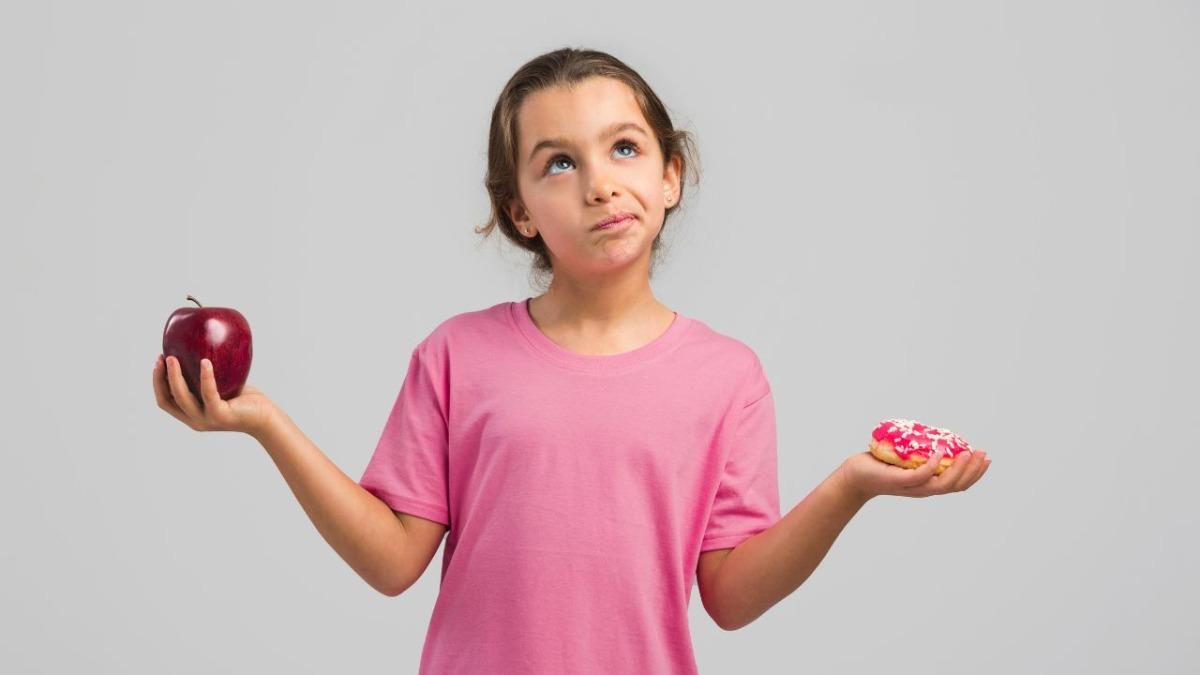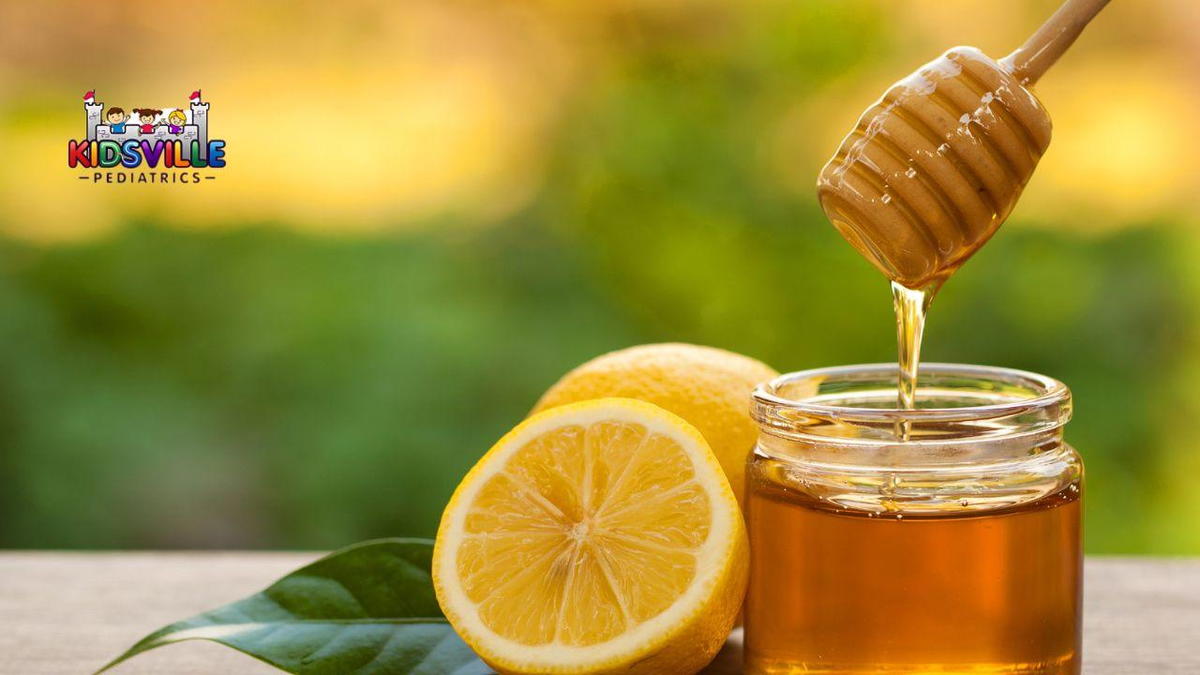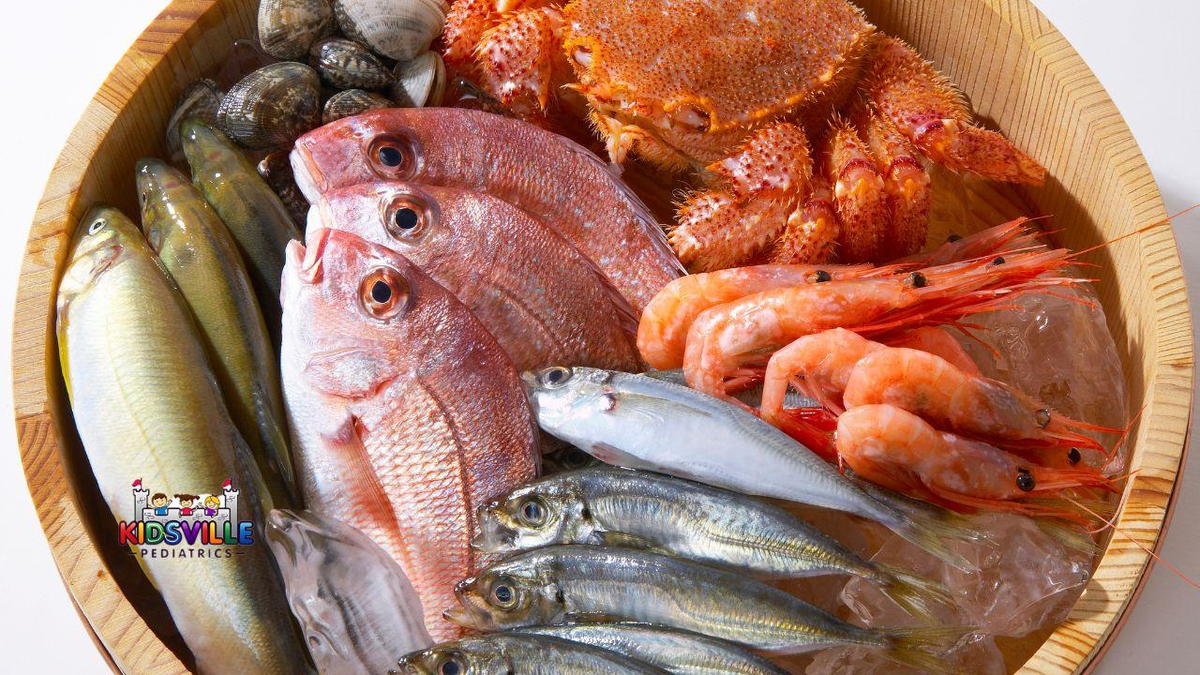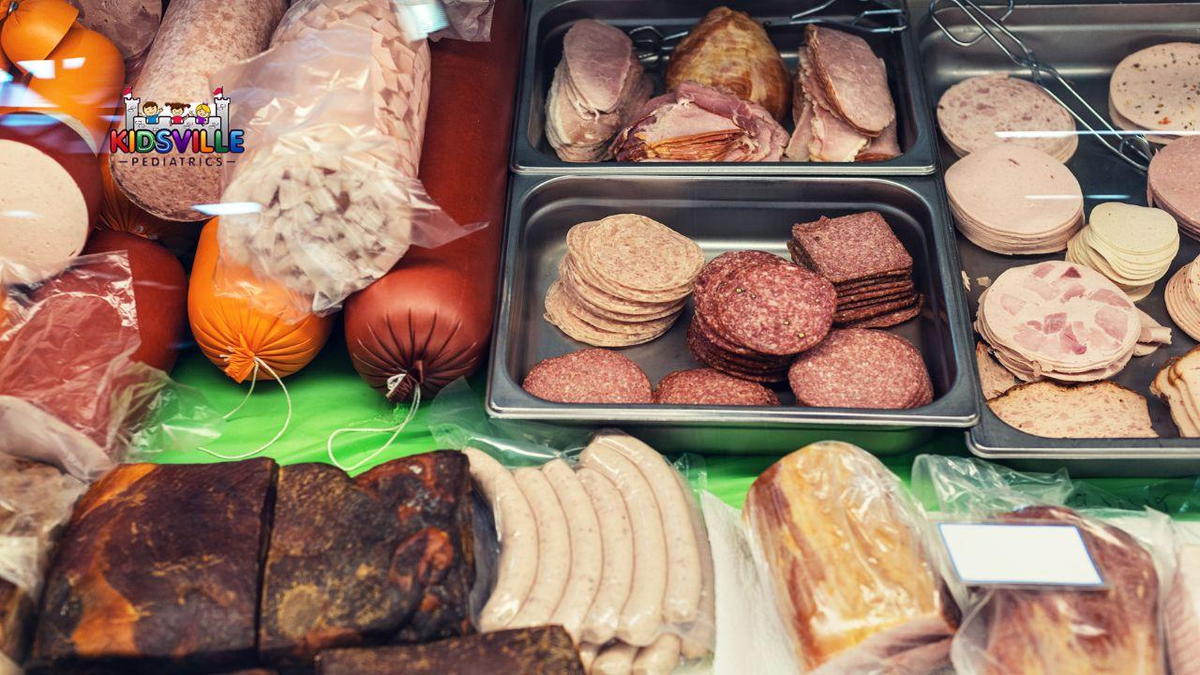
As a parent, you want nothing more than to keep your kids safe, healthy, and thriving. But when it comes to their diet, the line between what’s good and what’s not can sometimes blur. The food choices you make for your children can have a significant impact on their well-being, and while some foods might seem harmless, they could actually be doing more harm than good. It's easy to overlook potential dangers, especially when certain foods are marketed as kid-friendly or nutritious. However, the truth is, some of these dangerous foods could be putting your child's health at risk.
Before you reach for that next snack or meal option, it's essential to be aware of the risks that certain foods might pose. Understanding these dangers can help you make more informed choices and ensure that what ends up on their plate supports their growth and development, rather than hindering it. Here now are the top 7 dangerous foods you should never feed your kids and why avoiding them is crucial for their health.
#1. Raw or Undercooked Eggs

One area to be cautious about is the consumption of raw or undercooked eggs. These can pose a risk of Salmonella infection, a type of bacteria that can cause severe illness. While the risk is relatively low—about 1 in 20,000 eggs may contain Salmonella—it’s essential to be aware of the potential dangers.
Why Raw Eggs Can Be Risky
Salmonella leads to symptoms like fever, diarrhea, abdominal cramps, as well as vomiting. The illness typically appears 1 to 3 days after consuming contaminated food, though it can occur anywhere from 20 minutes to 6 weeks later. In severe cases, it can result in serious health complications.
Cooking Tips for Safety
Cooking eggs thoroughly is a simple way to eliminate the risk of Salmonella. For recipes requiring raw or undercooked eggs, opt for pasteurized egg products. These eggs have been treated to destroy bacteria without affecting their quality.
How to Prevent Contamination
To keep your family safe, ensure eggs are stored at or below 40°F and avoid using eggs with cracked or dirty shells. Wash hands, utensils, and kitchen surfaces with hot, soapy water before and after handling raw eggs. When cooking, ensure egg whites are firm and yolks are fully set. For baked dishes, the internal temperature should reach at least 160°F.
Special Considerations
Children, teenagers, and pregnant women are more susceptible to foodborne illnesses, and we at Kidsville Pediatrics Southlake, agree. If anyone in your family has a compromised immune system, it’s particularly important to avoid raw eggs and use pasteurized products instead.
#2. Honey (for infants under 1 year)

If you have a baby under one year old, it’s important to avoid giving them honey. Honey can contain Clostridium botulinum bacteria, which can lead to a rare but serious condition called infant botulism. This illness causes muscle weakness and can manifest as poor sucking, a weak cry, constipation, and decreased muscle tone, commonly known as floppiness.
Preventing Infant Botulism
To keep your baby safe, do not give honey or any processed foods containing honey, like honey graham crackers, before their first birthday. While light and dark corn syrups may also carry a risk, a definitive link has not been established. It’s best to check with your pediatrician Southlake expert before introducing these syrups into your baby’s diet.
When Honey Becomes Safe
As your child grows, their digestive system matures and can handle the Clostridium spores found in honey. Although honey has some nutritional benefits and is often seen as a healthier alternative to sugar, it’s crucial to wait until your baby is older before introducing it.
Symptoms of Infant Botulism
Infant botulism, linked to honey consumption in babies under 12 months, can be severe. Symptoms may include:
Overall weakness or floppiness
Slow feeding
Constipation
Loss of facial expression
Reduced gag reflex
Nutritional Information About Honey
Honey is a natural sweetener that contains trace amounts of vitamins, minerals, electrolytes, enzymes, amino acids, and flavonoids. However, it’s high in calories and sugar, making it an added sugar. The American Academy of Pediatrics (AAP) advises against added sugars for children under two years old due to risks like insulin resistance and type 2 diabetes.
Guidance for Parents
Once your child turns two, they can safely enjoy honey in moderation, without exceeding the recommended daily limit of 25 grams, or 6 teaspoons, of added sugars. For more advice on keeping your baby safe and healthy, visit Kidsville Pediatrics Southlake.
#3. Choking Hazards (whole grapes, nuts, popcorn)

Any pediatrician in Southlake will want to help you identify and avoid common choking hazards. The United States Department of Agriculture’s Special Supplemental Nutrition Program for Women, Infants, and Children (WIC) has compiled a list of harmful foods that could pose a choking risk to young children. Here’s what you need to know:
Fruits and Vegetables
When serving fruits and vegetables, be mindful of their form and size. Avoid giving your child:
Whole or uncut corn kernels
Uncut cherry or grape tomatoes
Raw carrots or apples in large chunks
Whole pieces of canned fruit
Uncut grapes, berries, cherries, or melon balls
Uncooked dried fruits, like raisins
To make these foods safer, cut them into small, manageable pieces and cook hard vegetables to soften them.
Proteins
Certain proteins can be choking hazards if not prepared properly. Be cautious with:
Whole or chopped nuts and seeds
Large spoonfuls or chunks of nut butters (like peanut butter)
Tough or large pieces of meat
Hot dogs, sausages, or meat sticks
Large chunks of cheese (especially string cheese)
Bones in meat or fish
Whole beans
Grain Products
Some grain products can also be risky. Avoid:
Cookies or granola bars that are too hard
Potato or corn chips, pretzels, popcorn, and similar snacks
Crackers or breads with seeds or whole grains
Whole grains like barley or wheat kernels
Plain wheat germ
Sweetened Foods
Sweet treats can be a choking hazard as well. Steer clear of:
Round or hard candies, jelly beans, caramels, gum drops, or gummy candies
Chewy fruit snacks
Chewing gum
Marshmallows
For additional advice tailored to your child's needs, consult with your pediatrician in Southlake.
#4. Sugary Drinks

Recent studies reveal that children are consuming too much sugar, and sugary drinks are a major culprit. In fact, kids in the U.S. are getting 17% of their calories from added sugars, with half of this coming from sugary beverages alone. This is significantly higher than the dietary guideline of keeping added sugars to less than 10% of total calories.
Effects of Sugary Drinks
Drinking sugary beverages regularly can lead to a host of health problems:
Unhealthy Weight Gain and Obesity: Excess sugar contributes to weight gain, which can result in serious conditions like heart disease, liver problems, and diabetes.
Heart Disease: High sugar intake damages blood vessels and increases the risk of heart disease.
Tooth Decay: Sugary drinks promote bacterial growth in the mouth, leading to cavities.
Fatty Liver: Excess sugar can lead to fat accumulation in the liver, impairing its function.
Type 2 Diabetes: Overconsumption of sugar can cause insulin resistance, leading to type 2 diabetes.
Sugary drinks offer empty calories without any nutritional benefits, increasing the risk of health complications for your child.
Artificial Sweeteners
A Better Option? Many parents turn to beverages sweetened with artificial sweeteners, thinking they are a healthier choice. However, these products, containing nonnutritive sweeteners (NNS), provide no nutritional benefit and may even encourage a preference for sugary foods. The long-term effects of these sweeteners are still not well understood, with concerns about their impact on gut health and taste preferences.
Tips to Reduce Sugary Drink Consumption
To help your child cut back on sugary drinks, consider these practical tips:
Start Young: Offer only water and milk to children under age 1.
Stay Hydrated: Ensure children drink 6-8 cups of water daily.
Add Fun Flavors: Infuse water with fruit or use fruit ice cubes for added flavor.
Read Labels: Check nutrition labels for sugar content in beverages.
Limit Juice Intake: Keep fruit juice consumption to a minimum.
Skip Sports Drinks: Only use sports drinks when necessary, not as a regular option.
For more personalized advice, visit a pediatrician in Southlake TX, who can guide you on maintaining a balanced diet for your child and reducing their sugar intake effectively.
#5. Caffeinated Beverages

When it comes to caffeine and children, the best advice is often none at all. The exact safe amount for kids hasn't been determined, but many experts, including us here at Kidsville Pediatrics Southlake, suggest avoiding caffeine completely. This substance, found in sodas, coffee, teas, energy drinks, and even chocolate, can negatively impact your child's health.
Effects of Caffeine on Children
Caffeine can affect kids in several ways, leading to issues such as:
Sleep Problems: Difficulty falling and staying asleep, and waking up groggy are common complaints.
Concentration Issues: Sleep disturbances from caffeine can decrease your child's ability to focus, counteracting any perceived benefits of caffeine.
Health Risks: Caffeine can contribute to anxiety, dehydration, digestive issues, heart palpitations, high blood pressure, and restlessness. Long-term use might lead to addiction and withdrawal symptoms, such as headaches and agitation.
Understanding Caffeine
Caffeine is a stimulant that affects the brain and nervous system. For children, even small amounts can have significant impacts. The American Academy of Pediatrics advises that energy drinks, which often contain high levels of caffeine and sugar, are particularly harmful and should be avoided altogether.
How Much Caffeine is Too Much?
For those 12 to 17 years old, it’s best to limit caffeine intake to less than 100 mg per day. For younger children, there is no known safe amount. To put this in perspective:
Coffee: About 100 mg per 8 ounces
Black Tea: About 50 mg per 8 ounces
Soda: About 25 mg per 8 ounces
Energy Drinks: 40 to 250 mg per 8 ounces
Tips for Managing Caffeine Intake
Model Good Habits: Choose non-caffeinated drinks when eating with your kids.
Read Labels: Be aware of caffeine content in beverages.
Avoid Energy Drinks: These are particularly harmful and offer no benefits.
#6. High-Mercury Fish (e.g. swordfish)

Fish and shellfish are essential for a well-rounded diet, offering high-quality protein, important nutrients, and omega-3 fatty acids. These nutrients support heart health and promote proper growth and development in children and teenagers. While including fish and shellfish in your child's diet is beneficial, it's crucial to be mindful of potential risks, particularly concerning mercury content.
Understanding Mercury in Fish and Shellfish
Most fish and shellfish contain trace amounts of mercury, but for most people, this is not a major concern. However, higher mercury levels can pose risks to unborn babies and young children’s developing nervous systems. The Food and Drug Administration (FDA) and the Environmental Protection Agency (EPA) advise that pregnant women, breastfeeding mothers, and young children avoid certain types of fish and opt for those with lower mercury levels.
Safe Fish Choices for Families
To ensure that your family enjoys the benefits of fish while minimizing mercury risks, follow these guidelines:
Avoid High-Mercury Fish
Steer clear of fish like shark, swordfish, king mackerel, and tilefish, as they have high mercury levels.
Safe Consumption for Pregnant and Breastfeeding Women
Enjoy up to 12 ounces (about two average meals) of a variety of lower-mercury fish and shellfish each week. Good choices include shrimp, canned light tuna, salmon, pollock, and catfish. If you consume albacore tuna (white tuna), limit it to 4 ounces per week.
Local Fish Advisories
Check for local advisories on the safety of fish caught from local waters. If no advisories are available, it's safe to eat up to 6 ounces (one average meal) of locally caught fish per week, but avoid other fish that week. When feeding fish to young children, serve smaller portions and follow the same guidelines.
Understanding Methylmercury
Mercury is a natural element that can become harmful when converted to methylmercury in the environment. Fish absorb methylmercury from water, and larger, longer-living fish tend to have higher mercury levels. Methylmercury accumulates in the body over time, so it’s important to monitor and limit intake, especially for those planning to become pregnant.
Frequently Asked Questions
What is Methylmercury?
Methylmercury is a harmful form of mercury found in fish and shellfish. It can affect the nervous systems of young children and unborn babies.
Why Should I Be Concerned About Methylmercury Even If I'm Not Pregnant?
Methylmercury can accumulate in your system over time. Reducing exposure is important for those planning to become pregnant in the future.
Are All Fish High in Mercury?
Nearly all fish contain some methylmercury, but larger fish like swordfish, shark, king mackerel, and tilefish have higher levels. Opt for smaller fish or those known to be lower in mercury.
What About Fish Sticks and Fast Food Fish?
Fish sticks and fast food fish are usually made from low-mercury species. However, it’s always good to check and ensure they align with safety guidelines.
What If My Child Eats More Fish Than Recommended?
If your child consumes more fish in one week than recommended, just reduce their intake the following week. It's important to average the recommended amount over time.
#7. Processed Foods

Nitrates (NO3) and nitrites (NO2) are compounds that occur naturally in foods and can also be added as preservatives. While nitrates are stable and less likely to cause harm, they can convert into nitrites in the body, which may have both beneficial and harmful effects.
Nitrites can turn into:
Nitric Oxide: Beneficial for the body.
Nitrosamines: Potentially harmful.
Manufacturers use nitrites in processed meats to preserve them and give them a pink or red color. Without these additives, meats would spoil more quickly.
Sources of Nitrates and Nitrites
Processed meats like bacon, ham, sausages, and hot dogs often contain added nitrates and nitrites. These compounds help prevent bacterial growth, enhance flavor, and improve color. However, high consumption of processed meats may increase the risk of digestive tract cancers.
Interestingly, nitrates and nitrites also naturally occur in vegetables, which may reduce cancer risks and offer health benefits. Studies show that about 80% of dietary nitrates come from vegetables. Additionally, your body produces nitrates and secretes them into saliva, which then re-enters the digestive system. These compounds help kill bacteria like Salmonella and convert into nitric oxide, a vital signaling molecule.
Health Effects on Blood Pressure and Heart Health
Nitrites can convert into nitric oxide, which plays a crucial role in dilating blood vessels and lowering blood pressure. Nitric oxide helps relax the tiny muscle cells in artery walls, leading to reduced blood pressure. This mechanism is similar to how nitroglycerin, a medication used to treat heart conditions, works.
Foods rich in nitrates, such as beetroot, can help lower blood pressure. Studies have shown a reduction in blood pressure by up to 4–10 mm/Hg within a few hours after consuming high-nitrate harmful foods.
For personalized advice on keeping dangerous foods at bay and managing your family’s diet, including concerns about nitrates and nitrites, consult with experts at Kidsville Pediatrics Southlake. They can guide you on maintaining a balanced diet while minimizing potential risks.
You may schedule an appointment online: https://www.kidsvillepeds.com/appointment/ Or visit/call our clinics: Kidsville Pediatrics Mansfield TX: 682-341-3910; 1759 Broad Park Circle S, Suite 201 & 205, Mansfield, TX Kidsville Pediatrics Southlake: 682-345-8010; 2813 W. Southlake Blvd Suite 100 Southlake, TX Kidsville Pediatrics McKinney: 469-885-9400; 5881 Virginia Pkwy. Suite 300 Mckinney, TX |
